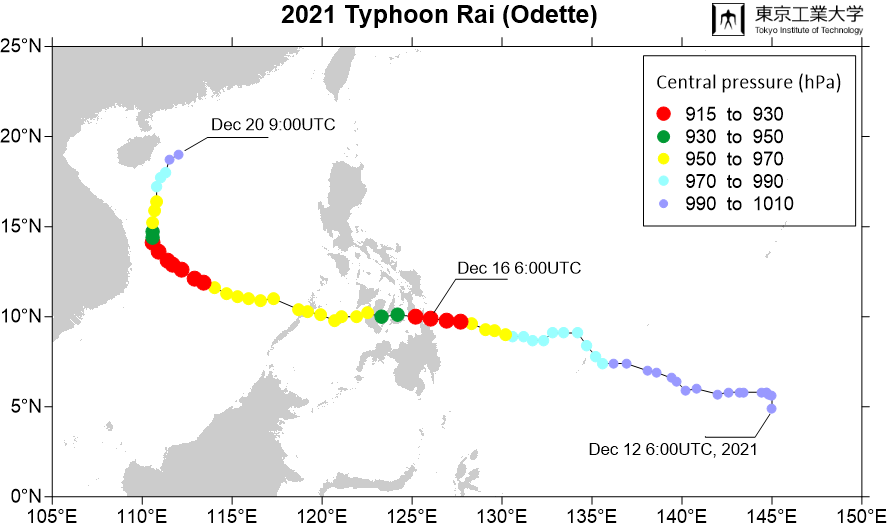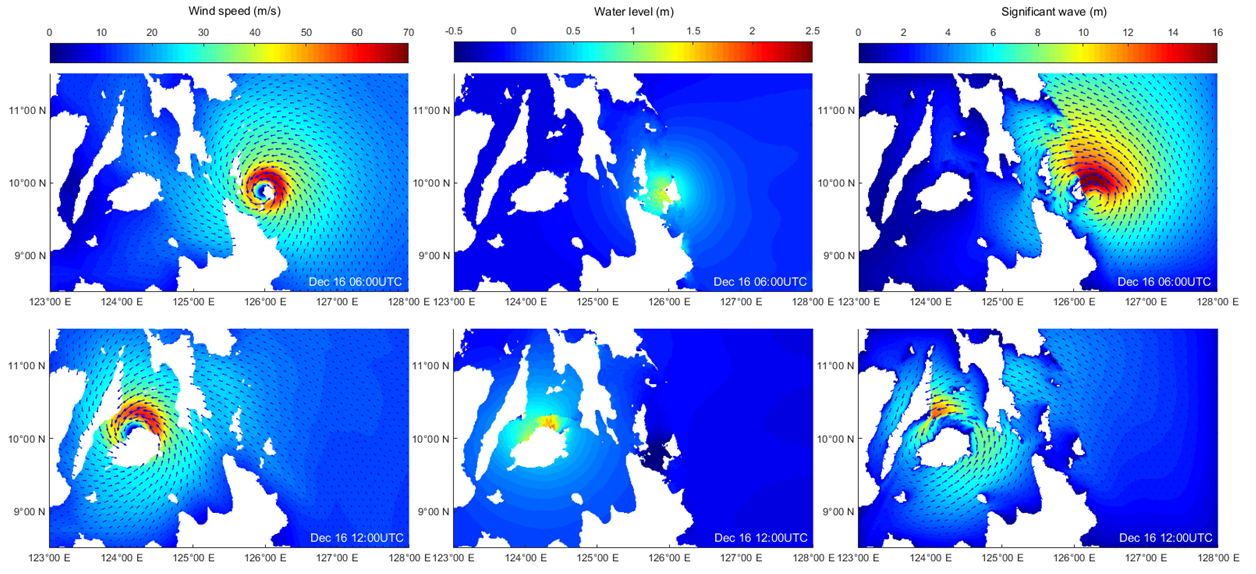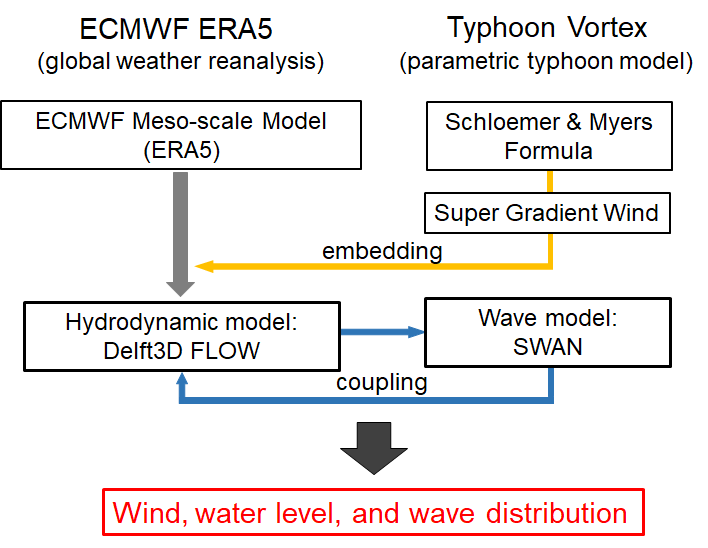Storm Surge and Wind Wave Analysis Caused by Typhoon Rai (Odette) in 2021
Estimated storm surge and wave heights caused by the typhoon, focusing on the timing of its landfall on the Philippines
Summary: Typhoon Rai (the local name is Odette) in 2021 was less extreme in terms of storm surge than Typhoon Haiyan (Yolanda), which hit the Philippines in 2013. However, in addition to the severe damage caused by strong winds, storm surges of up to 2 meters and very large waves estimated to be more than 12 meters hit vulnerable coastal communities in the Visayas, Mindanao, Bohol, and Cebu etc. This region is known to have a relatively low frequency of typhoon landfalls compared to the northern and central regions of the Philippines (see this paper).
Note: This analysis is tentative, based on the JMA best-track data and ECMWF reanalysis, coupled with the model of Takagi and Takahashi (2021).

Fig. 1 Track of Typhoon Rai (Odette) from emergence to disappearance

Fig. 2 Simulation of wind speed, water level, and significant wave height at 14:00 and 20:00 local time on December 16.

Fig. 3 Flowchart of the coupled meteorological and hydrodynamic models



